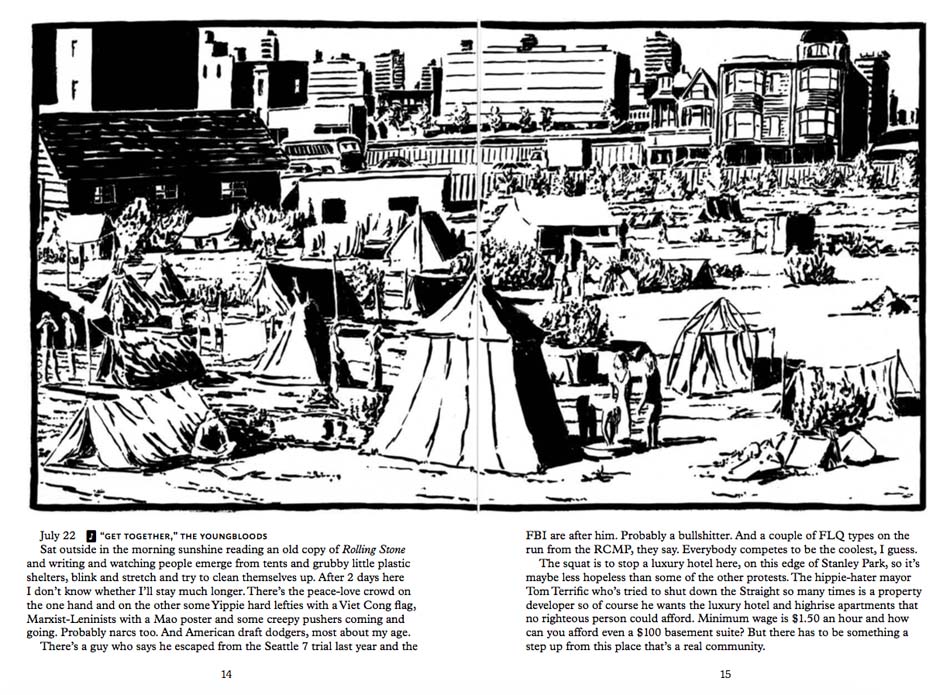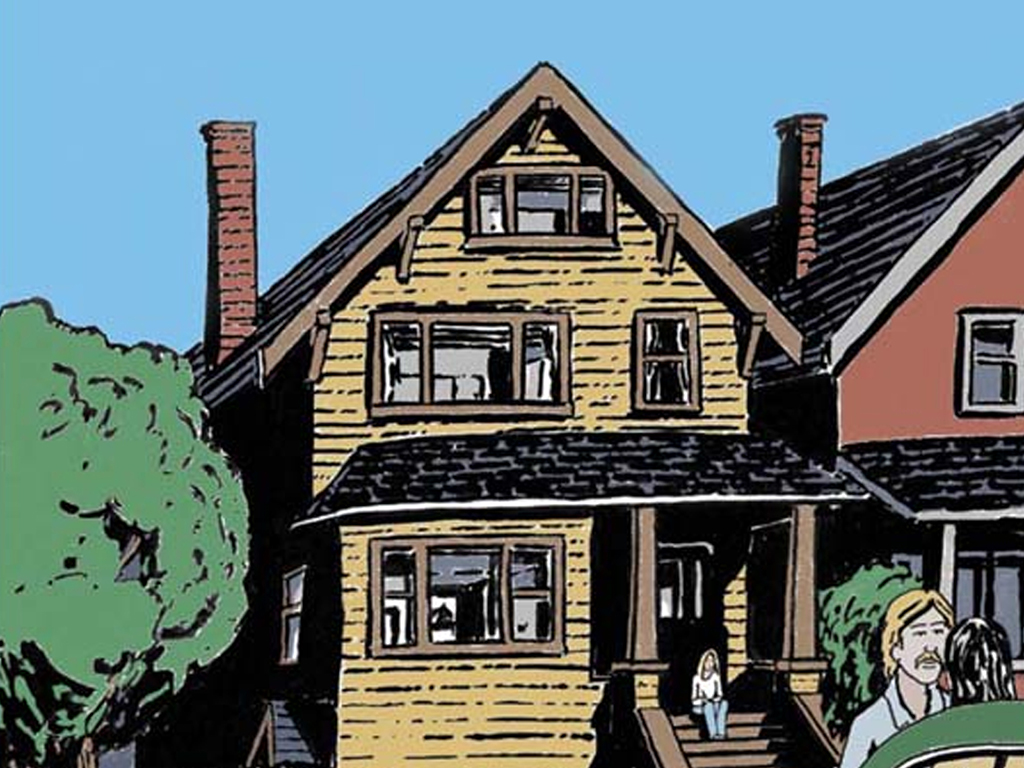Squatters? A near-zero vacancy rate? Demovictions and land assemblies?
This isn’t today — welcome to Vancouver’s housing crisis of the 1970s.
Back then, Michael Kluckner saw firsthand how property values could spike incredibly.
His parents had bought their west side Kerrisdale house for $12,000 in 1950. They sold it in 1972 for $44,000.
Kluckner was in his early 20s then, and had not yet made a name for himself by writing and illustrating beloved local history books like Vanishing Vancouver.
He heard a tip for success from the Wosk brothers, Ben and Morris, known for their developments and department stores at the time: buy good land, pay good prices and never sell.
Kluckner decided to buy a rooming house of his own in 1976, right on West Fifth Avenue in Kitsilano.
“It wasn’t as hard as it is now, but it wasn’t easy back then,” said Kluckner, whose house came with the previous owner’s mortgage, called an “assumable” mortgage. It cost $80,000, about 10 times his income.
“I rented out every corner and set to fixing it up,” he said.
The federal government of the 1970s knew it was important to preserve whatever affordable rentals existed in cities, and offered money to landlords like Kluckner for repairs. The $5,000 he received was used to stabilize the house’s foundation — which turned out to sit on top of a buried section of Tatlow Creek.
The characters that came and went from Kluckner’s house inspired his latest illustrated novel, called The Rooming House. Thousands of youth took to the road in the 1960s and ‘70s, hitchhiking, travelling and living in houses like his, with separate rooms and shared amenities. Kluckner had his share of those adventures. In the words of one of his characters: “just drifting, looking for something to believe in.”
Two diaries form the novel. We get entries from Mary, who arrives in Vancouver from Toronto by Greyhound after a breakup. The rooming house she’s living in has four floors, shared with an artist, a writer for the Georgia Straight, and psychology prof “Dr. Freud” and his student girlfriend. Oh, and the pot dealer who occasionally stays in the attic.
The second diary comes from Justin, who changed his name (like many people at the time) from David because it “sounds like church.” Justin is in town from Calgary to attend UBC.
Mary and Justin have their own romantic entanglements, but — as you can probably guess — they keep on running into one another.
Kluckner treats us to an ink drawing on every page: intimate snapshots of rallies, bedrooms, diners, train stations, cars on road trips — all packed with characters on their own odysseys. We see Greenpeace, Hare Krishnas and even a Stones concert. Locals will recognize little Easter eggs waiting for them in the drawings, from the Naam restaurant to publications of the era like Diet for a Small Planet. The story is based in Vancouver, with stints in Prince George, New York, San Francisco and India.
There are some two-page spreads of 1970s Vancouver with immersive scenes as if in cinematic widescreen: the Gastown riots with mounted cops wielding batons, naked bodies basking in the sun at the Maplewood Mudflats community and a panoramic view of the All Seasons Park squatters, protesting a hotel at the entrance to Stanley Park.

These were Vancouver’s years of progress in the name of urban renewal. As Justin puts it, the “hippie-hater” mayor Tom Campbell wants “luxury hotel and high-rise apartments that no righteous person could afford. Minimum wage is $1.50 an hour and how can you afford even a $100 basement suite?”
Developers were snapping up the rooming houses from Fairview to Kitsilano for land assemblies, with many a bulldozer-blocking protest. Condos had just been legislated, and demand was hot. With a vacancy rate near zero, there was enormous pressure on what housing was available.
Perhaps not so different from where we are now?
What we haven’t seen yet is a crash in property values. In the early 1980s, the value of Kluckner’s house fell from about $225,000 to $150,000, the price he ended up selling it at.
When we talk about the history of the city’s affordable housing stock, it’s usually basement suites and single-room occupancy hotels that are mentioned — not so much rooming houses.
Many of these houses were initially built for middle-class families over a century ago. Then they welcomed single workers during the Depression and the Second World War. Crack open the address book of the days and you’ll find that many were home to immigrant workers, carrying the ignorant labels of “Hindoo” or “Oriental.” The houses then emptied postwar as people left the city for the suburbs, but took on new life when they were occupied yet again by beatniks and hippies.
“These places fall apart gracefully,” said Kluckner. “They were very well built, and because they were so well built, tenants were rarely getting bills for upgrades.”
You can still find some rooming houses in Vancouver’s older neighbourhoods, particularly by False Creek where the lumber jobs were. But in recent years, what’s becoming more common is owners carving up these old houses into units to be rented or sold — each a private suite with its own amenities. These are called “multiple conversion dwellings.” The city doesn’t collect information about units that are owner-occupied, but they do count rentals. There are 7,100 rental units in 1,900 of these multi-unit houses.
If you live in one of these now, you won’t be running into your housemate in the washroom or getting your pot from the guy who lives in your attic. But the fact that they’re still standing is a testament to their role of housing a diversity of Vancouverites for over a century. Kluckner’s novel is a lively time capsule of one groovy chapter.
🔥🔥🏠
Hot, Hot Housing is a reported column on the housing crisis in Vancouver and beyond, published in The Tyee every Friday. Got housing stories of your own? Whether it’s market hijinks, tenancy horrors or survival tips, you can email us at [email protected]. ![]()
Read more: Local Economy, Housing
















Tyee Commenting Guidelines
Comments that violate guidelines risk being deleted, and violations may result in a temporary or permanent user ban. Maintain the spirit of good conversation to stay in the discussion.
*Please note The Tyee is not a forum for spreading misinformation about COVID-19, denying its existence or minimizing its risk to public health.
Do:
Do not: